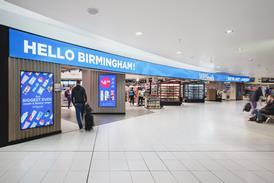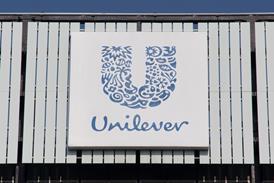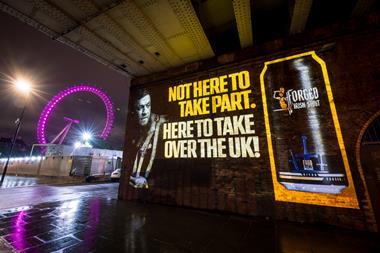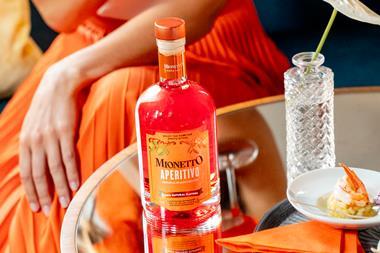No-frills products are muscling in on what was once sacred brand territory. Stefan Chomka looks at the rise of the value brands
Can you name the top-selling bottled water brand in France? What about the number one beer in Germany? Too easy? Actually, even if you think it’s a toss up between Evian or Contrex and Beck’s or Warsteiner, you’d be wrong.
France’s bestselling water is Castel’s Cristaline, and by no small margin. According to IRI figures for 2004, Cristaline has almost double the market share of its nearest rival, Evian, at 19%. And the German beer? Oettinger, produced by the company of the same name, of course.
Apart from French water and German beer connoisseurs, the answers are likely to come as a shock to many. Water brands such as Evian, Perrier and Vittel, and beer such as Beck’s, owned by international brewer InBev, have become ingrained in the consumer psyche thanks to vigorous (and indeed expensive) marketing campaigns. Yet it is their relatively unheard of and cheaper competitors that are silently taking the glory. According to OC&C Strategy Consultants, cheap, no-frills brands - known as value brands - are muscling in on what was once sacred brand territory. So much so, in fact, that over the next few years many well-known and established brands will make way for value brands, it says.
Chris Outram, chairman emeritus at OC&C, attributes the rise of value brands to consumer fatigue with ‘middle brands’. “The really difficult position to be is right in the middle, where many historical core brands are,” says Outram. “The consumer has got a touch of brand boredom and is quite happy to do one of three things - move up to premium, down to value or both.”
Premium brands, on the other hand, are thriving, while bottom-rung products are performing well because of their value-for-money positioning. Luke Jensen, director at
OC&C, offers an explanation for the polarisation. “Brands in the middle quite often stand for reassurance, whereas premium brands stand for aspiration and excitement. Reassurance has become less and less important as consumers are confident enough to go to Aldi for their shopping and then buy something from Gucci.”
However, successful value brands are not just cheap, poor-quality products launched on to the market to tap into this trend, says OC&C. In order to be profitable, brands must be good quality yet beat rivals on price.
This, it says, requires a completely clutter-free business model that includes long production runs, minimal brand complexity and low marketing spend. It also comes from paying closer attention to the wholesaler and retailer, offering them higher margins to encourage them to list products.
Says Jensen: “Value brand manufacturers make less money per sale than branded, but then they use their production asset base very intensely and get an excellent return on capital. Successful manufacturers reinvest some of what they don’t spend on marketing by giving it to the retailer as margin.”
This is exactly how both Cristaline and Oettinger have achieved their success. In Cristaline’s case, the company essentially reinvented the way bottled water is sold, says Outram. While most bottled water in France comes from a single source, Cristaline has 17 sources across France located in areas close to its markets. Because the biggest cost in water is its transportation, this has enabled it to undercut other brands on price by half, and to be cheaper even than own label.
Oettinger has adopted similar cost-cutting measures and it has been a major success story in a market of falling consumption. For example, while producing 14 different types of beer, it only uses one bottle. The brewer also bypasses expensive wholesalers and the on-trade. It has its own fleet of lorries delivering direct to supermarkets, enabling the beer to sell at 40% cheaper than its rivals.
OC&C stresses that these are not isolated cases. “It’s a truly international phenomenon,” says Jensen. “In the grocery market throughout Europe, there has been more and more emphasis on price. In Germany this is down to the rise of hard discounters and in France the disappearance of local small shops. In the UK it’s been a bit more subtle, but it is down to the same discounting phenomenon. This is not the market of Sainsbury and Marks & Spencer of 10 years ago that had a quality platform; it’s now Tesco and Asda. Retailers will be very receptive to products that are perceived to deliver outstanding value.”
He adds that value brands are more attractive to retailers because they offer a hassle-free alternative to own label. “Value brands are not specific to a single retailer. Own label is a bit of a pain when it comes to category management, whereas retailers can try a value brand and see if it works.”
Richmond cigarettes is evidence that value brands are already making an impact in the UK. While Jensen says that many people are still unfamiliar with the brand, this hasn’t stopped it becoming the UK’s number two cigarette with a 14% volume share of the market. Relaunched by Imperial Tobacco in 1999, Richmond’s basic proposition is price, being around 25% cheaper than other major brands.
In what is regarded as a relatively mature and stable market, Richmond’s rise is even more impressive, says Jensen. “If you look at tobacco, this is one of the greatest success stories in the past few years and it’s entirely based on price. Competitors say ‘easy, they are giving it away and they are going to pay the price in the long run’, but there is no sign at all of any giving away. This is a very successful commercial operation.”
Yet one brand’s success is another’s failure, and Jensen is quick to point out that unless some of the middle brands reassess their position they too could be under serious threat from value rivals. “The rise of value brands will force companies to take a totally honest look at their own brands. If you are just another brand, and in a market that is susceptible to a value-for-money proposition, then frankly you’re in deep trouble. All you can do is hope you’ve got a real brand or, if you haven’t, declutter your value chain sharpish and play them at their own game. If you are not sure, then you probably ought to exit the market quickly.”
Categories in which value brands are set to thrive are those in which there is little own label presence and where branded goods command high prices such as household and health and beauty. Jensen says: “There will definitely be opportunity for value brands in H&B because it hasn’t been occupied by own label and consumers now have confidence that the product is good enough. They don’t need it to be L’Oréal anymore.”
Companies should not think attacks will come only from small players, says Jensen. They will need to watch their backs from multinational brands as well. Take Dasani, which Coca-Cola markets as a no-frills filtered value water brand. While its UK launch may have been more damp squib than gushing success, the brand is doing well in the US.
“We are not talking just about minnows and start-ups,” he warns. “Brands can no longer take for granted that they are going to dictate to consumers what they buy.”
Can you name the top-selling bottled water brand in France? What about the number one beer in Germany? Too easy? Actually, even if you think it’s a toss up between Evian or Contrex and Beck’s or Warsteiner, you’d be wrong.
France’s bestselling water is Castel’s Cristaline, and by no small margin. According to IRI figures for 2004, Cristaline has almost double the market share of its nearest rival, Evian, at 19%. And the German beer? Oettinger, produced by the company of the same name, of course.
Apart from French water and German beer connoisseurs, the answers are likely to come as a shock to many. Water brands such as Evian, Perrier and Vittel, and beer such as Beck’s, owned by international brewer InBev, have become ingrained in the consumer psyche thanks to vigorous (and indeed expensive) marketing campaigns. Yet it is their relatively unheard of and cheaper competitors that are silently taking the glory. According to OC&C Strategy Consultants, cheap, no-frills brands - known as value brands - are muscling in on what was once sacred brand territory. So much so, in fact, that over the next few years many well-known and established brands will make way for value brands, it says.
Chris Outram, chairman emeritus at OC&C, attributes the rise of value brands to consumer fatigue with ‘middle brands’. “The really difficult position to be is right in the middle, where many historical core brands are,” says Outram. “The consumer has got a touch of brand boredom and is quite happy to do one of three things - move up to premium, down to value or both.”
Premium brands, on the other hand, are thriving, while bottom-rung products are performing well because of their value-for-money positioning. Luke Jensen, director at
OC&C, offers an explanation for the polarisation. “Brands in the middle quite often stand for reassurance, whereas premium brands stand for aspiration and excitement. Reassurance has become less and less important as consumers are confident enough to go to Aldi for their shopping and then buy something from Gucci.”
However, successful value brands are not just cheap, poor-quality products launched on to the market to tap into this trend, says OC&C. In order to be profitable, brands must be good quality yet beat rivals on price.
This, it says, requires a completely clutter-free business model that includes long production runs, minimal brand complexity and low marketing spend. It also comes from paying closer attention to the wholesaler and retailer, offering them higher margins to encourage them to list products.
Says Jensen: “Value brand manufacturers make less money per sale than branded, but then they use their production asset base very intensely and get an excellent return on capital. Successful manufacturers reinvest some of what they don’t spend on marketing by giving it to the retailer as margin.”
This is exactly how both Cristaline and Oettinger have achieved their success. In Cristaline’s case, the company essentially reinvented the way bottled water is sold, says Outram. While most bottled water in France comes from a single source, Cristaline has 17 sources across France located in areas close to its markets. Because the biggest cost in water is its transportation, this has enabled it to undercut other brands on price by half, and to be cheaper even than own label.
Oettinger has adopted similar cost-cutting measures and it has been a major success story in a market of falling consumption. For example, while producing 14 different types of beer, it only uses one bottle. The brewer also bypasses expensive wholesalers and the on-trade. It has its own fleet of lorries delivering direct to supermarkets, enabling the beer to sell at 40% cheaper than its rivals.
OC&C stresses that these are not isolated cases. “It’s a truly international phenomenon,” says Jensen. “In the grocery market throughout Europe, there has been more and more emphasis on price. In Germany this is down to the rise of hard discounters and in France the disappearance of local small shops. In the UK it’s been a bit more subtle, but it is down to the same discounting phenomenon. This is not the market of Sainsbury and Marks & Spencer of 10 years ago that had a quality platform; it’s now Tesco and Asda. Retailers will be very receptive to products that are perceived to deliver outstanding value.”
He adds that value brands are more attractive to retailers because they offer a hassle-free alternative to own label. “Value brands are not specific to a single retailer. Own label is a bit of a pain when it comes to category management, whereas retailers can try a value brand and see if it works.”
Richmond cigarettes is evidence that value brands are already making an impact in the UK. While Jensen says that many people are still unfamiliar with the brand, this hasn’t stopped it becoming the UK’s number two cigarette with a 14% volume share of the market. Relaunched by Imperial Tobacco in 1999, Richmond’s basic proposition is price, being around 25% cheaper than other major brands.
In what is regarded as a relatively mature and stable market, Richmond’s rise is even more impressive, says Jensen. “If you look at tobacco, this is one of the greatest success stories in the past few years and it’s entirely based on price. Competitors say ‘easy, they are giving it away and they are going to pay the price in the long run’, but there is no sign at all of any giving away. This is a very successful commercial operation.”
Yet one brand’s success is another’s failure, and Jensen is quick to point out that unless some of the middle brands reassess their position they too could be under serious threat from value rivals. “The rise of value brands will force companies to take a totally honest look at their own brands. If you are just another brand, and in a market that is susceptible to a value-for-money proposition, then frankly you’re in deep trouble. All you can do is hope you’ve got a real brand or, if you haven’t, declutter your value chain sharpish and play them at their own game. If you are not sure, then you probably ought to exit the market quickly.”
Categories in which value brands are set to thrive are those in which there is little own label presence and where branded goods command high prices such as household and health and beauty. Jensen says: “There will definitely be opportunity for value brands in H&B because it hasn’t been occupied by own label and consumers now have confidence that the product is good enough. They don’t need it to be L’Oréal anymore.”
Companies should not think attacks will come only from small players, says Jensen. They will need to watch their backs from multinational brands as well. Take Dasani, which Coca-Cola markets as a no-frills filtered value water brand. While its UK launch may have been more damp squib than gushing success, the brand is doing well in the US.
“We are not talking just about minnows and start-ups,” he warns. “Brands can no longer take for granted that they are going to dictate to consumers what they buy.”


















No comments yet